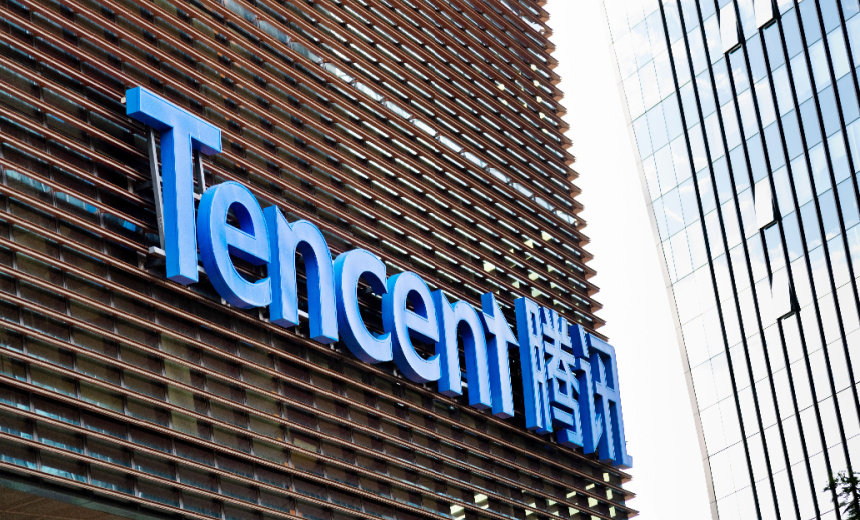Artificial Intelligence & Machine Learning
,
Next-Generation Technologies & Secure Development
Not Every New Generation of LLM Needs Exponentially More Chips, Says Tencent Exec

Chinese tech giant Tencent reported a slowdown in GPU deployment, attributing it to a prioritization among Sino tech companies of chip efficiency over raw numbers, a strategy made clear internationally by artificial intelligence firm DeepSeek.
See Also: Capturing the cybersecurity dividend
U.S. policy has been to deny Chinese firms’ access to cutting-edge American technology through an escalating set of export controls imposed during the Biden administration (see: White House Moves to Restrict AI Chip Exports).
Tencent Chief Strategy Officer James Mitchell, during a fourth quarter earnings call, said that it has integrated its HunYuan-T1 reasoning model and DeepSeek-R1 model into the firm’s Yuanbao chatbot app. It’s possible, he said, that the app’s AI-fueled search and synopsis-generating capabilities will subsume traditional web search.
Getting there won’t necessarily require exponential growth in chip usage for each new AI model iteration, he said. “There was a period of time last year when there was a belief that every new generation of large language model required in order of magnitude more GPUs,” he told analysts on Wednesday.
“That period of time ended with the breakthroughs that DeepSeek demonstrated,” he said. “And now, the industry and we, within the industry, are getting much higher productivity on a large language model training from existing GPUs without needing to add additional GPUs at the pace previously expected.”
The Chinese tech company’s approach to squeezing chips a step below state of the art for extra performance became clear in January with the rollout of DeepSeek R1 on an international stage. The company said its training costs amounted to millions and its chip usage to just roughly 2,000 older generation Nvidia GPUs, an announcement that sent U.S. tech stock prices tumbling. Mainstay U.S. foundation model developers report needing hundreds of millions of dollars and upwards of tens of thousands of advanced chips to train models. American tech companies accused DeepSeek of plagiarism, although other analysts have called DeepSeek’s technical performance consistent with preexisting trend lines of AI performance improvements.
Tencent’s capital expenditure for 2024 – its fiscal year is January through December – reached $10.6 billion, more than tripling its 2023 spending. A significant portion of this investment went toward servers and GPUs for LLM training. The company also rents GPU compute time to customers. Tencent President Martin Lau said that the company had “stepped up” purchases of GPUs since the fourth quarter of 2024, particularly to support its cloud services business, which Tencent believes will accelerate revenue growth.
Mitchell said that the company’s capital expenditure this year will be a “low teens percentage of our revenue.” With Tencent’s 2024 revenue standing at approximately $91.1 billion, projected capital expenditure could reach around $13 billion. That figure is lower than the AI infrastructure investments of U.S. competitors, with Microsoft planning to spend $80 billion and Amazon budgeting $100 billion this year.
Mitchell said that Tencent’s AI and GPU investments outpace its Chinese counterparts. “Chinese companies are generally prioritizing efficiency and utilization – efficient utilization of the GPU servers,” he said. “That doesn’t necessarily impair the ultimate effectiveness of the technology that’s being developed. And I think DeepSeek’s success really sort of symbolizes and demonstrated that reality.”
Lau said the company sees potential for AI-driven agentic services that can interact with WeChat’s Mini Programs ecosystem, which includes e-commerce, food delivery and entertainment.
Tencent posted a profit of $31.6 billion for fiscal year 2024, a 40% increase from the previous year. The company’s fourth quarter revenue reached $24 billion, marking an 11% rise, while quarterly profits climbed 29% to $7.9 billion. WeChat’s user growth remained modest at 3%.
